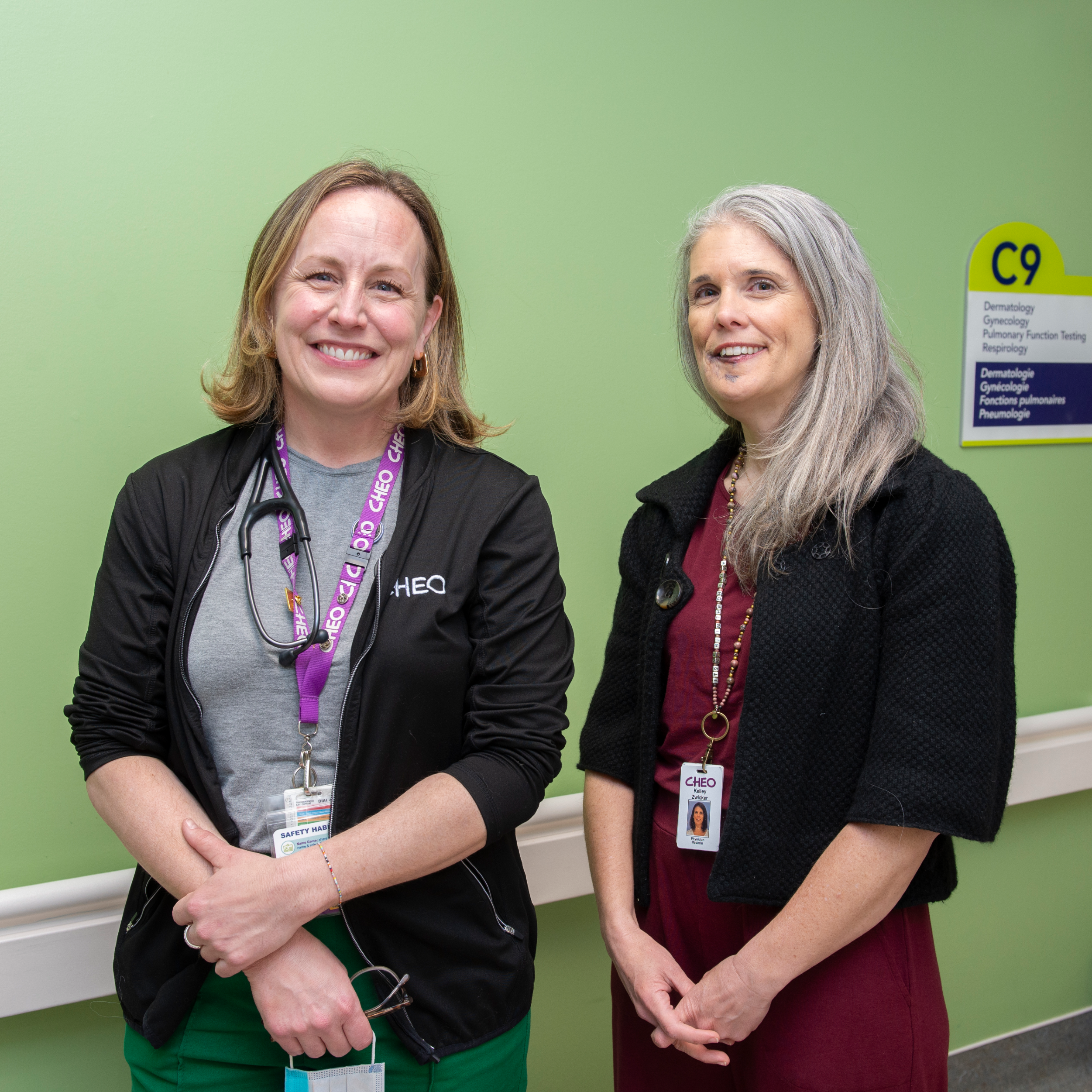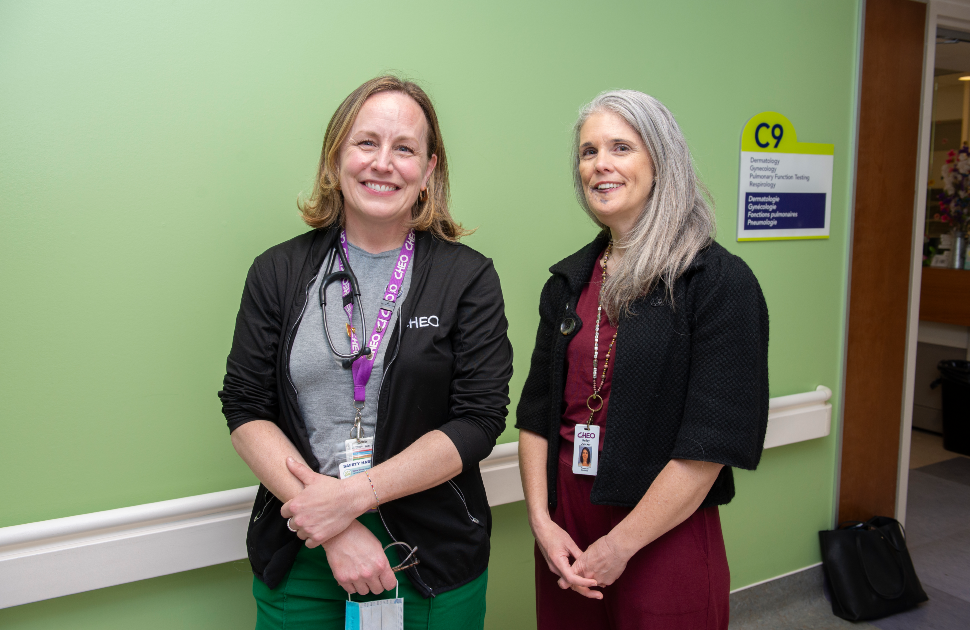
A new CHEO-led initiative gives community pediatricians the tools to better manage childhood asthma, which helps reduce wait-lists and delivers high-quality care sooner.
The Asthma Integrated Care Pathway was created in 2024 to address wait times for pediatric asthma, supported by a historic investment from the Ontario government.
The pathway was an evolution of the CHEO Asthma Program that began with clinicians delivering asthma education to patients and families, as well as CHEO staff in the inpatient and emergency teams.
As of April 2025, 11 community pediatricians completed a “boot camp” that provided asthma education and easier access to pulmonary function testing, the gold standard for diagnosing asthma in children six years of age and older.
These community pediatricians can also now refer their patients to a formal asthma education session provided by a CHEO asthma educator.
Andrea Higginson, clinical nurse practitioner with CHEO’s Respirology team, said families experience a lot of anxiety around understanding asthma and how to treat it.
Despite asthma being one of the most common chronic conditions in children and youth, parents face many challenges accessing information and treatment needed to help their child.
CHEO gets anywhere from three to nine consultations for asthma per day from primary care providers, with higher numbers during the peak of viral season, which contributed to await-list of about 650 children as of October 2024.
Higginson said the wait time for an initial assessment has fallen to around six months, down significantly from18 months. This has been made possible by redirecting some of the consults to pediatricians in the community and giving community pediatricians more direct access to pediatric respirology sub-specialists.
Higginson has also helped assess some of the referred patients to further help address the wait-list.
Community Pediatrician Dr. Kelley Zwicker, CHEO’s division chief of community pediatrics, says the boot camp has streamlined care for asthma, which is one of the most common reasons for a referral to a pediatrician.
“We want to make sure that kids can be seen in a timelier fashion,” said Zwicker, adding that many of them don’t need to be seen at CHEO.
Five-year-old Willa Wright was seen by Zwicker at her clinic in Manotick after a five-month wait. Her mom, Jessica, says Willa has had coughing attacks since she was an infant.
She has taken puffers and a steroid nasal spray, but the cough lingers most of the year, worsening during viral season. The family was relieved to receive expert care that will help them find answers, just a few months after they were referred to CHEO.
Zwicker said community pediatricians specialize in helping manage complex health issues, such as asthma, to prevent unnecessary hospital visits.
The pathway helps ensure kids like Willa won’t need to go to the emergency room in the middle of viral season due to their asthma — one of many initiatives underway to help limit repeat visits to hospital.
CHEO has also worked to improve its relationship with community health-care providers. Zwicker said collaboration is critical to help improve care in Ottawa and eastern Ontario, which ensures only the sickest kids are seen at CHEO.
CHEO’s asthma program also works to limit hospital visits with ongoing education for families and holding clinics in the community closer to patients and families across the region.





